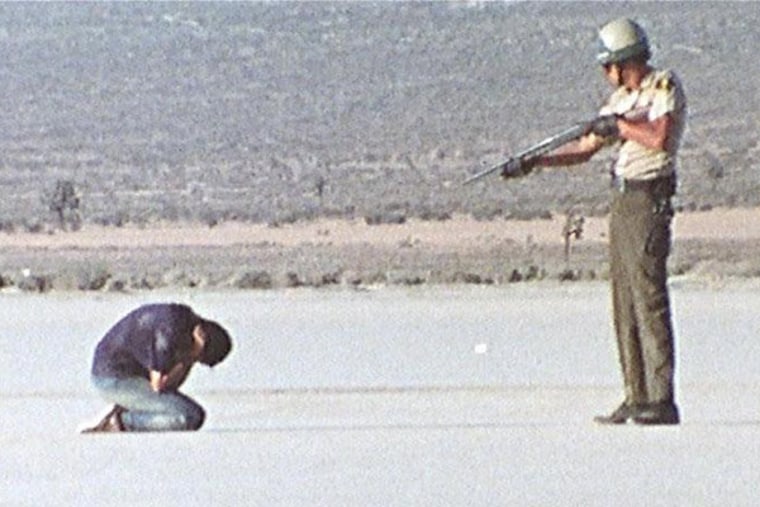As 2011 draws to a close it should be noted that this year marked the 40th anniversary of Peter Watkins' "Punishment Park" — a small pseudo documentary about young anti-establishment protesters being tried for crimes against the United States. The young protesters are given a choice: several years in federal prison, or punishment park, where they'll be forced to walk across 50 miles of California desert to win their freedom. Along the way the young people must avoid the police chasing them and survive the desert heat without water.
Upon its release in 1971, "Punishment Park" screened for exactly one week in a Los Angeles theater and was quickly forgotten. It wasn't until the success of director Peter Watkins' later films that "Punishment Park" would be given a second look now.
This year has seen an entire world in protest. From massive protests in the Middle East, to recent anti-government rallies in Russia and finally, to our own Occupy Wall Street protests. Time magazine even named "The Protester" their 2011 Person of the Year. While these movements were not directly inspired by this 88-minute film, the themes and visuals very much apply to today's world.
When the controversial film was finally re-released on DVD in 2005, film critics immediately made the comparison of the movie's Nixon era setting to George W. Bush's administration. They also noted that much of the content of the film, while jolting, was extremely dated. Dated though it may be, it resonates today through it's imagery of police beating, gagging young protesters. While this imagery seemed to be inspired by the shootings at Kent State and the trial of the "Chicago Seven," we can now, unfortunately, draw modern day parallels between the YouTube videos showing students at U.C. Davis being pepper-sprayed at point-blank range as well as the photos of a bleeding Scott Olsen, the Iraq War veteran who was injured by police during an Occupy Oakland protest.
Most people have seen the images of the N.Y.P.D. clearing Zuccotti Park of all Occupy Wall Street protesters on November 15 — turning over tents and arresting those who refused to leave the area. What is relatively unknown is that the following night "Occupy Cinema," an organization described on their website as, "an open collective harnessing the moving image to aid the worldwide occupation movement," planned to screen a print of "Punishment Park" to protesters camped out in lower Manhattan. An Occupy Cinema rep explained, "[On the night of the raid] they weren't even letting backpacks, foods or musical instruments back into Liberty Plaza, but we were able to sneak the screen and projector in. However, the power ended up being cut so it didn't happen."
Ultimately, "Punishment Park" is about social class roles, racism and the nature of morality. Some of the arguments made about the direction the United States are very much a product of their time. But the imagery of police brutality shows eerie similarities with the N.Y.P.D. and Oakland police departments' actions toward Occupy Wall Street protesters. Four decades after a limited release in one Los Angeles theater, the movie stayed alive through magazine articles, bootleg copies and word of mouth to become not only a warning for those who abuse their power, but hopefully a lesson about how to engage in political protest.
